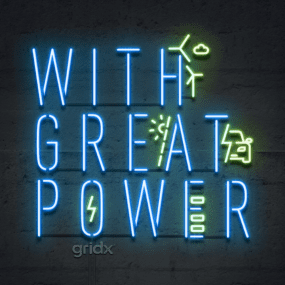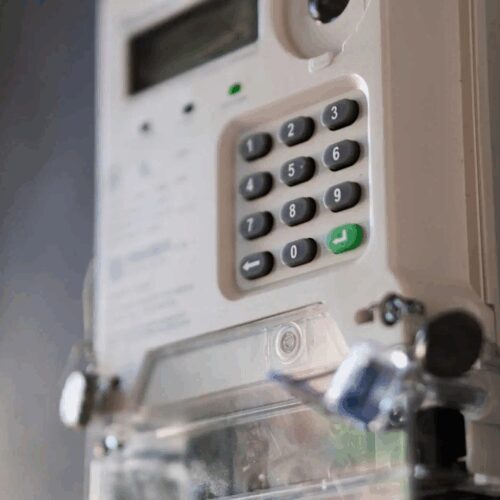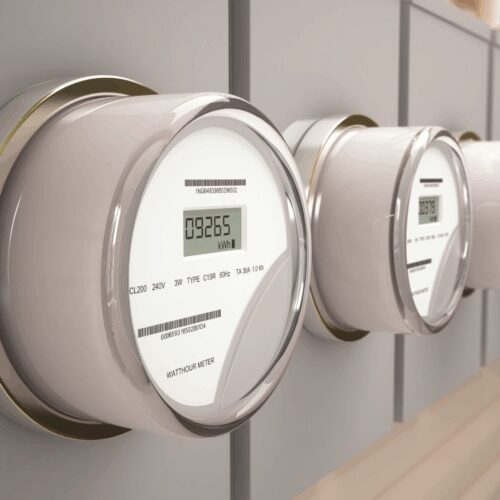TOU Rate Mistake: Avoiding the ‘Tax on God’ Dilemma When Transitioning to Dynamic Rates


Sign up for our magazine
The premier outlet for compelling storytelling around the innovators and innovations driving the clean energy transition.
Modern rate structures help utilities meet decarbonization goals by providing financial incentives to shift energy usage away from peak periods, preventing the activation of dirty peaker plants, optimizing electric vehicle charging, and utilizing other distributed renewable energy resources (DERs) like solar power. They can also save customers money on their bills, which is certainly an added benefit.
In order for a time-of-use (TOU) rate transition to be successful, more people need to adopt these rate structures. Fortunately, utilities have emphasized engagement and education, including communicating the bill impact of different plans to help people make the right choice.
GridX is at the forefront of this work with successful implementations at Southern California Edison (SCE), Pacific Gas and Electric (PG&E), and several other top utility providers across the country.
But there is a larger story to any successful TOU rate implementation. While we must provide personalized analysis to individuals to get them on the right rate, we can’t ignore the value of also analyzing whole populations during these transitions. This will help utilities avoid TOU rate mistakes and ensure everyone benefits from electrification.
Whole population rate analysis is the process of calculating bills for an entire utility’s customer base on a current and alternative rate plan using the historic load profile of homes and businesses.
When done right, rate analysis gives the utility valuable business intelligence, such as the revenue impact, which measures the financial ramifications of transitioning from a current to a future rate plan. When not done right (or at all), mistakes are made, resulting in a poor customer experience and higher energy bills.
The ‘tax on God’ dilemma
A few years ago, a more progressive utility was in the process of rolling out new default, opt-out time-of-use rates for small business customers.
The effort included a new demand charge, which is part of some utility tariffs and is applied based on a customer’s highest peak load. Adding a demand charge was supposed to be financially punitive for businesses whose usage patterns included large spikes in demand.
When the utility completed its analysis of the impacts of this new rate structure, it felt confident in the resulting data and began implementing the rates. The analysis, based on a relatively small sample of customers, showed minimal bill impacts to small businesses and communicated that assumption to their customers.
Everything seemed to be working as planned until the phone calls and complaints began rolling in. One unique customer class started seeing huge spikes in their bills…churches.
The utility immediately launched an investigation. It found that the sample data didn’t account for the fact that churches see significant spikes on weekends, resulting in energy bills potentially doubling or tripling based on the new demand charge.
By neglecting to use smart meter data for the whole population, the utility created the perception they were “taxing God,” which couldn’t have been further from the truth.
It was an honest mistake, but one that could have been avoided with a more thorough analysis of their entire customer population.
How to avoid TOU rate mistakes
Is there a better example of why communicating an “average” bill impact isn’t going to cut it if we are going to make modern rates a ubiquitous tool in enabling our clean energy future?
As modern rates become more complex and diverse – today there are 53,000 approved ones across the U.S. (a number that will continue to grow) – we must use all available tools when evaluating and designing these constructs.
That includes big data technology that analyzes an individual’s smart meter data to ensure their needs are understood and met when transitioning to a new rate. If we don’t understand the entire picture, then assumptions will be made and residential customers or individual businesses can be disproportionately billed for participating.
While this spike in energy prices on churches was an unintended mistake, utilities can’t take for granted the importance of getting upgrades and energy bills right the first time. We shouldn’t unnecessarily “tax” anyone for making the decision to adopt a rate that should benefit them, the electric utility, and the grid.
Dynamic rate design is one of the most important tools for decarbonizing the electric grid. But we must figure out how to make these types of choices more accessible and better for customers if we are to achieve our targets.
For more on the “tax on God” story and why electricity rate design is such a critical decarbonization tool, check out this podcast.
The future of utility goes beyond CIS
In the past, utility providers would develop rate designs with spreadsheets and take sample populations, see how those sample populations performed, and create a rate design based on the outcome.
Today, however, we see how that approach can not only be inaccurate and incomplete but can also cause huge spikes for customers who weren’t included in the sample population, leading to faulty rate design and a negative view of TOU rate adoption.
The ability to recognize how a future rate change will influence every one of your customers will help ensure that no customer is unfairly billed.
Clear analytics can show the impact of a time-of-day use rate and how electricity demand impacts the utility bill during on-peak times as a whole population, not just for homeowners or certain types of customers. This can help us avoid leaving out customer populations in the future.
Enhancing the customer information system (CIS) with add-on engines capable of analyzing complex rate structures and programs will help us understand how a customer’s energy bill can fluctuate and give them access to the information to make better-informed energy usage decisions. This is especially important as customers adopt DERs like photovoltaic solar panels and wind generators to offset reliance on the electricity grid. Renewable energy statistics forecast up to 35% of the nation’s electricity will be produced through renewable sources by 2025.
The future of utility goes far past meter reading and CIS billing systems but is a multifaceted approach with APIs that allows us to pull from any meter and analyze any class of customer to gain an extensive understanding of individual energy needs.
Utilizing insights into customers’ kilowatt-hour energy usage for their personal appliances like air conditioners, water heaters, or washing machines, can help predict a more accurate monthly bill.
By using APIs we are able to evaluate daily demand charges, include insightful electricity usage breakdowns and different scenario options, and provide real-time rate calculations that can mimic behavior changes. The future of energy needs more accurate data for the prediction of electricity prices and billing we can trust.
Clear insight for customers
In order to create benchmark change in the energy sector, utility providers need to give customers accurate data that shows them how they can save on electric bills by transitioning the bulk of their energy use to off-peak hours.
We need clear data that can explain TOU rate plans to customers and show them how their energy usage impacts their monthly bills. Precise whole-population data can provide customers and utilities with the confidence that they are on a lower rate plan that can help them personally cut energy costs and transition properly.
Understanding our energy consumption in real time can aid in reducing a customer’s bill. By evaluating utility providers’ whole customer population in real time, we can better predict peak rate times when there is more strain on the power plant and the electrical grid, and energy prices are up.
More accurate insights into customer behavior give us a better idea of the best time-of-use plan for each customer, allowing us to properly predict a customer billing period so there are no surprises.
Conclusion
Utilities need to do better to provide clear and thorough data to their customers. This will enable them to lead customers into a better energy future that can not only help them choose the rate plan that’s right for them but also help guide them when utilizing EV, solar, and other distributed energy sources (DER).
The future of decarbonization means exploring the behavior of all energy customers.

Harnessing Technology to Empower Customers
Learn how Carlos Nouel, National Grid’s VP of transformation programs, is working to empower customers while making the “new stuff” normal.




